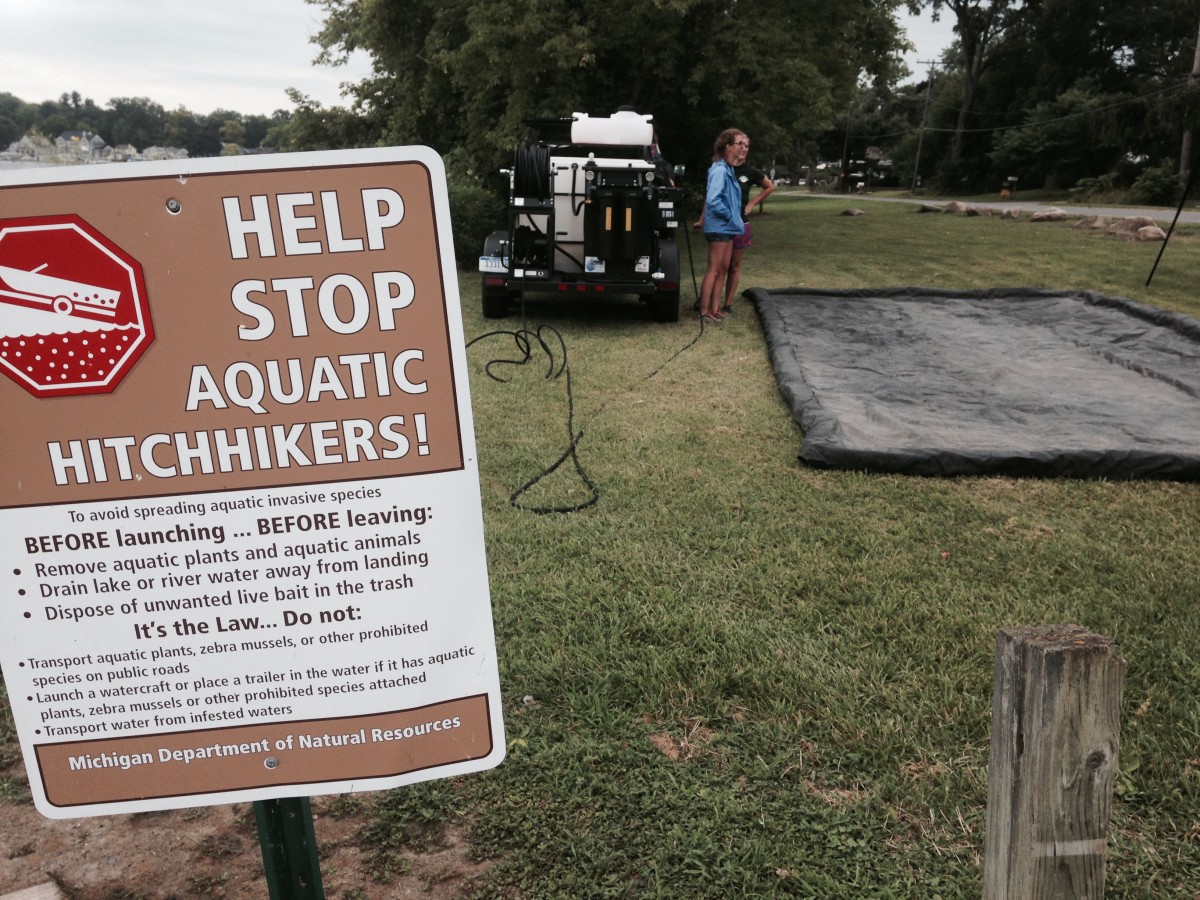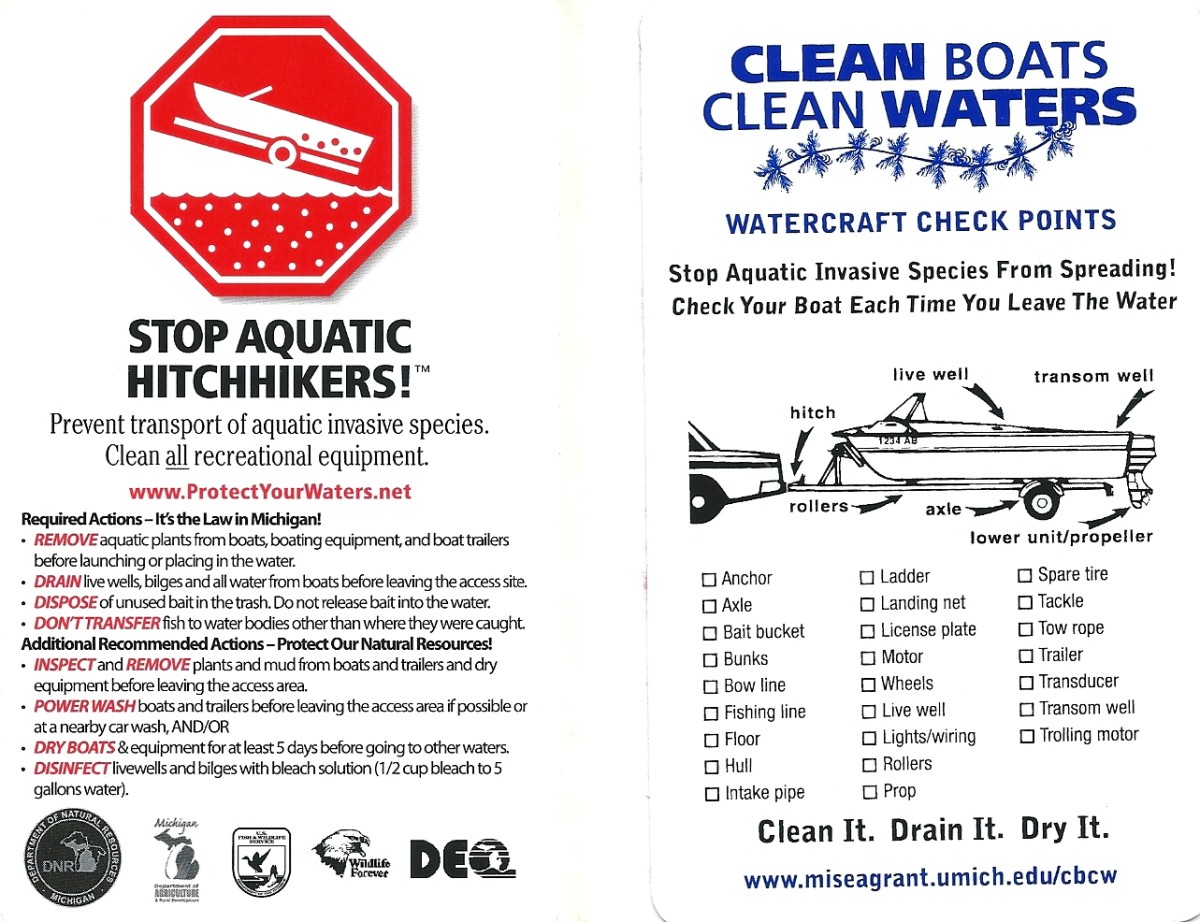 As reported a few hours ago, a boat wash was in place earlier today at the west end launch on Hyde Road. The idea was to raise awareness of transporting invasive species from one lake to another, and to demonstrate one method of thwarting it.
As reported a few hours ago, a boat wash was in place earlier today at the west end launch on Hyde Road. The idea was to raise awareness of transporting invasive species from one lake to another, and to demonstrate one method of thwarting it.
Here’s how it works. A boat is pulled onto a large mat that is hooked to a drainage system. The operator sprays the boat and trailer with a wand that looks like what you would find on a power washer or at a car wash. The sprayer is powered by a pump that has its own clean water supply. The water collected on the mat is pumped into a reservoir that is later released into a sanitary sewer. The device has a heater that is designed to increased its effectiveness, although it was not operational today.
How did it go? Not well.
About 15 boats used the launched during the scheduled hours between 8 am and 1 pm today. Every boat owner refused to take part. Each had an explanation of why. When the TV cameras showed up, the team persuaded someone with a kayak to place it on the mat so viewers could see how the system worked. And because of the lack of interest, the event, which also been scheduled for tomorrow, has been cancelled.
DNA evidence confirms the presence of hybrid Eurasian water milfoil (HEWM) in Clark Lake. A professional survey last fall revealed that there was 20 acres in the lake. Lakes that did not check the advance of this fast spreading species found that it curtailed recreational use, destroyed wildlife habitat and lowered property values. To view what is being done about this at Clark Lake, please click here.
No amount of boat washing will eradicate the 20 acres of HEWM already in the lake. There are invasive species much worse than HEWM. One of them is starry stonewart, which is classified as an algae, not a plant like HEWM. Clark Lake Invasive Species Committee Chairman John Deming comments “starry stonewart is much harder control, so prevention is essential.” He continues “if not boat washing, a practical solution must be found.”
Three governmental groups were involved in this project. The DEQ provided the wash system, Michigan State University hired the operators, and the Forestry Service supplied the grant money.











